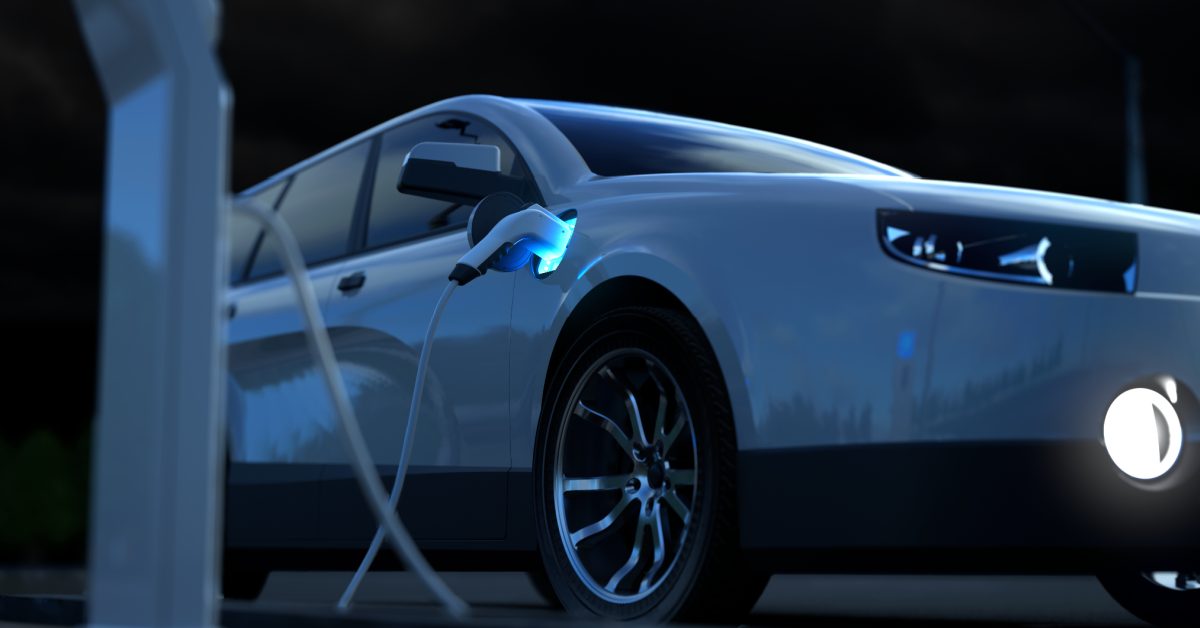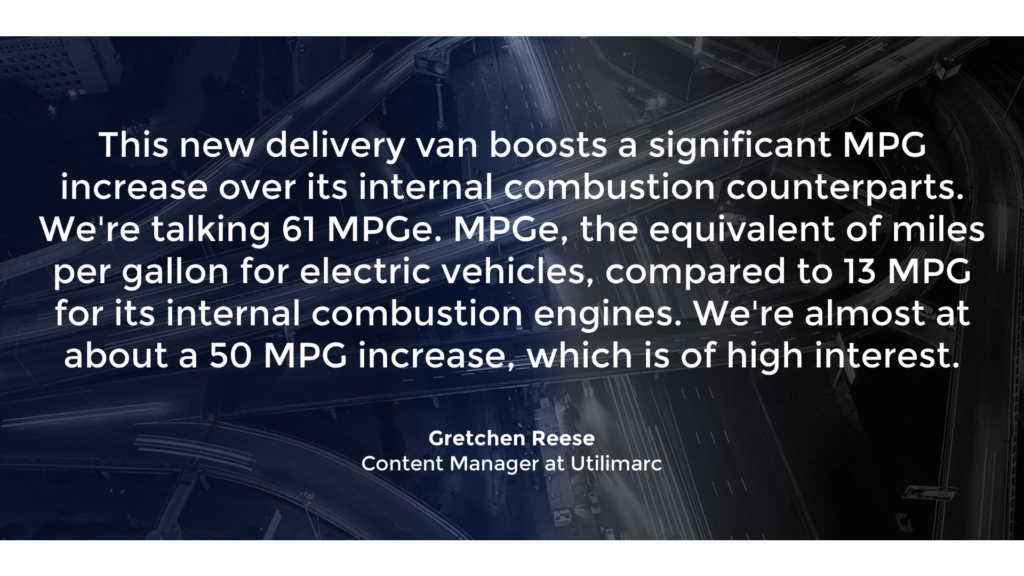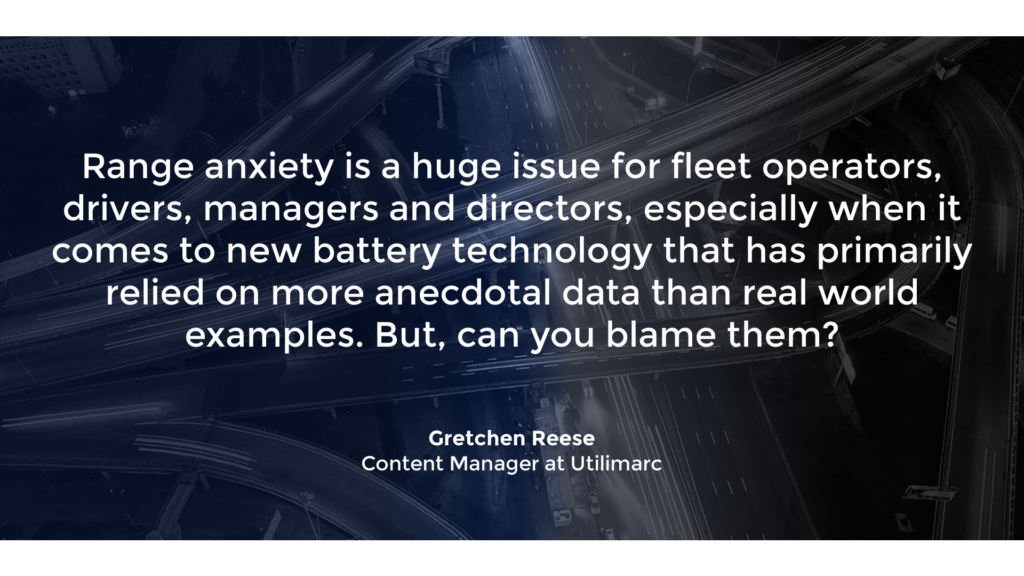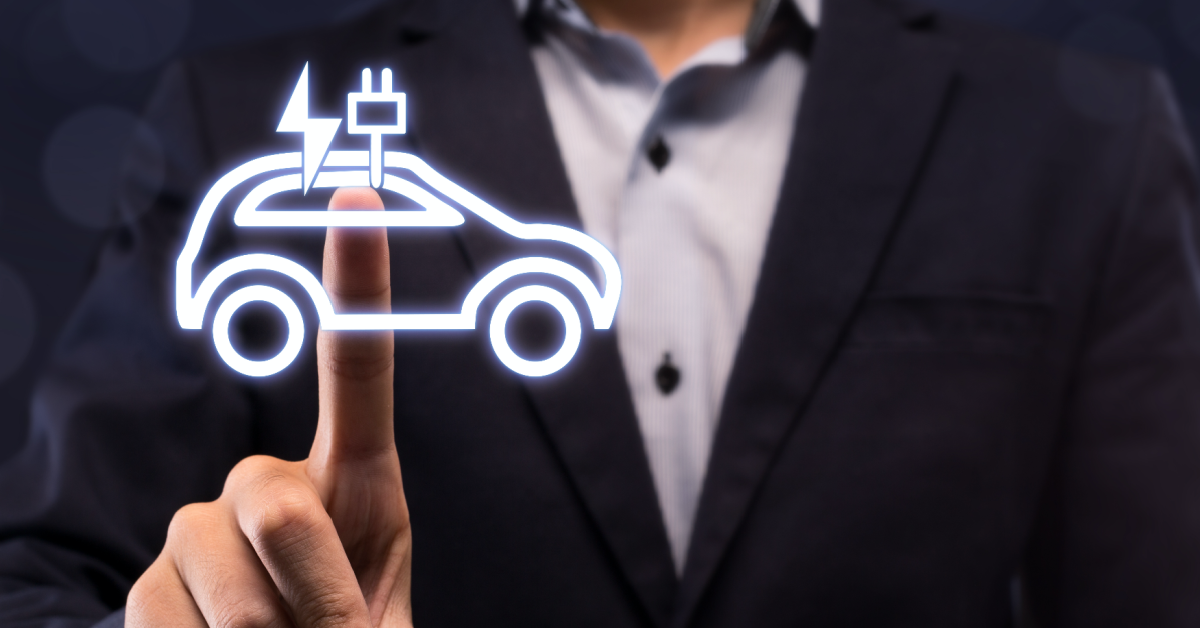
Bi-Coastal Charging, DHL is Lightning Fast and Telematics Gone Rugged – What’s New This Month in Fleet?
This week’s episode of the Fleet FYIs Podcast is another incoming edition of the Monthly Hotlist.
We’re breaking down what’s making waves and revving engines this month in the fleet industry, as well as adding a bit of perspective from our analysts. The Monthly Hotlist will air during the last week of every month, making sure you’re caught up on top stories, new technology launches and new initiatives that’ll surely have people talking.
Here’s a quick summary of this week’s show:

“This new delivery van boosts a significant MPG increase over its internal combustion counterparts. We’re talking 61MPGe. MPGe, the equivalent of miles per gallon for electric vehicles, compared to 13 MPG for its [opposing] internal combustion engines. We’re almost at about a 50 MPG increase, which is of high interest.”
Gretchen Reese, Bi-Coastal Charging, DHL is Lightning Fast and Telematics Gone Rugged – What’s New This Month in Fleet? | Utilimarc Fleet FYIs Podcast
“Range anxiety is a huge issue for fleet operators, drivers, manager and directors – especially when it comes to a new battery technology that has primarily relied on more anecdotal data than real world examples. But, can you blame them?”

Are Electric Vehicles as Sustainable as They Want Us to Think? | Fleet FYIs: Season 2 Episode 6
Gretchen Reese (00:06):
Hey there. Welcome to Fleet FYIs, the weekly podcast by Utilimarc. That reveals how you can make the most of your data for smarter fleet management. My name is Gretchen and every week you’ll hear from me and some of the industry’s finest in candid conversations that will shed some light on not only two decades worth of data insights, but some of the industry’s hottest talking points and key metric analysis with the aim to help you better understand your fleet from every angle.
Gretchen Reese (00:33):
But before we begin, if this is the first time you’ve heard our show, thanks for stopping by. I’m so glad you decided to come along for the ride with us. But I’ve got a quick favor to ask you. Once you’ve finished today’s episode, if you could take a few minutes to leave us a review on your favorite podcasting platform, we would really appreciate it. Give us a rating, five stars I hope. Or tell us what you liked or leave us a comment or a question about what you’ve heard in today’s episode. But if we haven’t yet covered a topic that you’re interested in hearing more about, let us know. We would be happy to go over it in detail in a later episode. If that sounds good to you, let’s get back to the show.
Gretchen Reese (01:09):
Hey everyone. And welcome back to another episode of the Fleet FYIs podcast. I hope you’re all doing well, especially now that spring has sprung. At least for most people, very sensitive to our friends over in Colorado that have recently gotten about as much as seven feet of snow in the recent weeks. Which, Oh gosh, that’s a lot. But anyways, the sun here is shining. The birds are chirping and that’s making me really excited to be able to spend some more time outside soon in the coming days, without the worry of catching a chill. All of my other freeze babies out there, I’m glad we’re in sync. But today’s episode of Fleet FYIs is another edition of the monthly hot list. Meaning we’re bringing our analysts perspective on some of the top news stories in fleets straight to you. So we’re covering everything from new infrastructure and launches to upcoming events and thoughts on such a thing as too much data, if you can believe it or not. So without further ado, let’s get into March’s monthly hotlist.
Gretchen Reese (02:26):
First up on the list as per usual, I like to start this part off of the show with some Utilimarc news. And this one I find to be quite fascinating. So over the last couple of weeks, we’ve been serving fleets around the country on electric vehicle performance. And I know we’ve been talking about EVs a lot, especially on Fleet FYIs lately. But I think this is part of this data poll that you’re really going to be interested in hearing. So this survey, once it’s been completed, it’ll help gather insights from a variety of utility fleet peers that are planning on or already have introduced electric vehicles to their organization. The survey begins with establishing what metrics each fleet will be using to measure the success and or ROI of the performance of their EV program. For example, taking a look at the reduction of CO2 emissions for their organization or fleet, a reduction in maintenance costs, cost per mile performance, or perhaps even fuel savings.
Gretchen Reese (03:21):
We’re also taking a look at how each fleet surveyed reports their current or plan targets for EV performance. How they plan to measure usage and how they plan to charge their newly electrified fleet. Because let’s be honest, that’s been a key concern for a lot of people as this new technology has been adopted. So the question is, will it be a company owned charging station? Will it be public? Will the vehicle be take-home with chargers implemented at employees homes? The piece I’m most interested in learning about is will these charging stations be powered by the electric grid? Or will they run partially on solar power?
Gretchen Reese (03:55):
Actually, over this whole pandemic course, I’ve suddenly become the person that will drive two hours to go and see ice. I did that a couple of weeks ago. So, in Minnesota, there’s a beautiful area called the North Shore on Lake Superior and ice out season there is gorgeous. And the last time I was up in Duluth, I actually saw a full electric grid or not a full electric grid, but a full electric vehicle charging station that was powered so it looked, quite highly off of solar power, which I was fascinated by.
Gretchen Reese (04:28):
So I think it’ll be really interesting to see just how many fleets are not just using electric vehicles, but also looking into the charging potential and how you can use alternative power sources. As well as getting a look into how many EVs each fleet has or plans to purchase. And what percentage of their fleet is already electrified. So as time ticks on, I’ll be curious to monitor just how many fleets will actually adopt EVs because right, it’s still technically considered a controversial topic. Not everyone’s on board yet. Even though there are some people that are really, really excited about this new technology adaptation.
Gretchen Reese (05:05):
And it’ll be interesting to see what types of vehicles they plan to electrify first. Because if you survey people in construction, they may tell you that it’s harder than most. And some people that rely heavily on sedans or even light duty pickup trucks might tell you that it might be the easiest decision they ever made. We’ll have more information on the results of this survey soon. So if you want to know more, make sure you keep an eye on our website, which is www.utilimarc.com, for more details. And we’ll be able to fill you in on everything that we found, which I think is going to be pretty awesome.
Gretchen Reese (05:49):
Next up we’re heading to Spain. Of course, virtually we’re not actually buying a plane ticket to Spain and heading there. But we’re headed to Spain where Daimler trucks, battery-electric, urban delivery truck is making its first debut, which is very exciting. The company giving these trucks their initial debut is none other than Aquaservice, who is a leading distributor of natural mineral water and beverages in Spain. And in doing this, they’ve become the first company in Southern Europe to incorporate Daimler trucks, all electric light duty model into its urban distribution fleet. The model called the FUSO, I think I’m saying that right. F-U-S-O eCanter is meeting the need for sustainable ecological transport and delivery solutions for urban delivery fleets. The first phase of this trucks roll out will operate in Valencia with plans to incorporate even more electric trucks into the Aquaservice fleet by 2025, with the goal of being carbon neutral by 2030.
Gretchen Reese (06:44):
Personally, I think that we’re going to be seeing a large uptick in sustainability pledges, especially in the coming months, in the coming years. And it’s not just for the increasing adoption of new electric vehicle technology, but also that of seeing companies pledging carbon neutrality goals with their completion year being within this decade or within the following. And for large fleets, especially international ones, this is a massively significant step and our analysts are pretty amped about it. That’s for sure. Wondering why it’s taking so long for so many fleets to finally make that pledge. And I think it’s important just for anyone, whether you’re a consumer, like you and me, and taking a step as simple as choosing a reusable bag over a plastic bag at a grocery store. Or really just trying to do our best to be sustainable and reuse things we already have. Even all the way to fleets, and airlines, and so many other companies making these sustainability pledges. Because we need to take care of our environment just so it’s there for future generations and also there for us to enjoy as we go forward.
Gretchen Reese (07:58):
Heading back state side, next up on the technology front is from one of our partners Geotab, and for two reasons. So firstly on the telematics side with the launch of the new GO9 rugged telematics device for fleets. And this is for fleets based in areas that face harsh weather conditions and environments. So this device is specifically designed to better withstand extreme temperatures and precipitations. Midwest fleets looking at you here. Along with some of the same advanced ups technology that you can expect from the traditional GO9 device. Now, if your fleet is more often exposed to dirt and debris or even harsh weather, the rugged telematics system may just be one that you could consider. Geotab thus far has been recommending this new telematics device to fleets that operate within the construction, engineering, agriculture, utilities, oil, gas, and mining industries. And it said to be able to withstand temperatures from about negative 40 degrees to 180 degrees Fahrenheit, which is a pretty wide range.
Gretchen Reese (09:00):
So this could be a pretty robust solution for fleets that are looking for a heavier duty telematics option. Will it catch on? Maybe. I think fleets that endure extreme weather events should certainly consider their options. And one thing that we do offer as one of Geotab’s partners is the ability to give you some more information. Because our team does work very closely with Geotabs to ensure our client’s telematics needs are met. So you can schedule a demo on our website or if you’d rather, our contact information will also be in the show notes and the description of this episode. But just shifting gears a little bit, because there was one other thing that I wanted to talk about for Geotab for this monthly hotlist roundup.
Gretchen Reese (09:41):
And on this other note, the second reason that Geotab has found its way into this month’s monthly hot list is their newly announced partnership with Electric Last Mile Solutions. And ELMS has been on my radar for a while, just with new electric technology coming out. And especially when it comes to these urban delivery fleets, because we’ve been hearing about these quite frequently within the last few months, at least I have. So this new partnership will focus primarily on bringing a factory installed connectivity solution on ELMSs soon to come urban delivery electric vehicle.
Gretchen Reese (10:14):
Now it said that this solution will provide customers with a centralized access to their connected vehicle data by a Geotabs native platform. And the device used in the urban delivery vehicles will be Geotab GO9 plus, and it will help enable high-speed connectivity and fleet managers to see a full view of their urban delivery vehicles data. So one thing that I actually find particularly handy is that this device will also turn these vehicles into wifi hotspots when and where they’re needed. Pretty fancy, huh? I mean, I guess you could say that no one could ever be without cell service ever again. That is, I guess if they’ve enabled wifi calling and wifi hotspots, but that’s just my two cents.
Gretchen Reese (11:01):
We’re moving on to another new technology integration in New York and California. Going a bit by coastal and I’m excited for it. We’re all familiar with the mail courier, DHL, otherwise known as the Deutsche Post DHL group and their express delivery arm, DHL Express. Well to make their fleet in urban cities even more efficient and even speedier when it comes to mail delivery, which we all know that we love. DHL has just announced its plans to deploy nearly 90 new lightning electric Ford transit, 350 HD electric delivery vans this year in New York and California. Wow. What a mouthful of a name that was. That was a pretty long one.
Gretchen Reese (11:51):
But this new delivery van, it boosts a significant benefit to miles per gallon over its internal combustion counterpart. Now, if you’re guessing, you might think, what? Does it have an extra five miles a gallon, an extra 10? No, we’re talking 61 MPGE. So the equivalent of miles per gallon for electric vehicles compared to 13 miles per gallon for its internal combustion engines. So we’re almost talking about a 50 miles per gallon increase, which is insane. So that alongside proprietary telematics, an analytics software that aids in driver training, vehicle efficiencies, and route optimization. I think it’ll be interesting to see how this model is adopted into urban delivery fleets in the long run. And it’ll be really, really nice just to see them whizzing around knowing that your mail is being delivered faster than ever before. I hope.
Gretchen Reese (12:52):
Now last but not least we will wrap up with yet another story on EVs, but this time we are focusing on infrastructure specifically. So I’m sure you’ve all heard me talk about this before, but range anxiety is a huge issue for fleet operators, drivers, managers, and directors, and the like, especially when it comes to new battery technology that has primarily more anecdotal data than real world examples. I mean, can you blame them? No, not really. But that’s where this last story can perk up some ears around the country. And perhaps even internationally as we look at different ways to set up for the adoption or the heavier adoption of EVs in the future. Earlier this month, six major utility companies announced a plan to add electric vehicle fast chargers to connect the Atlantic Coast, the Midwest, the Gulf Coast, and central plains key destinations, which is absolutely major.
Gretchen Reese (13:47):
The idea is to ensure that electric vehicle drivers have access to a seamless network of charge stations, connecting major highway systems all around the country. So the main players of this agreement are from the Electric Highway Coalition, which you may have heard of. So that means organizations like American Electric Power, Dominion Energy, Duke Energy, Entergy Corporation, Southern Company, and the Tennessee Valley Authority. And you may just recognize some of our clients on this list, a little bit of a humble brag in my opinion. But many fleets, they know the challenges that come with relying on an EV fleet, especially with the long range battery technology still being so relatively new.
Gretchen Reese (14:27):
So each of these companies that I was previously just mentioning is taking steps to provide EV charging solutions within their service territories. And like I said, that connects major, major, major delivery destinations, and even just the major destinations where you have fleets operating all around the country. And it’s exciting news for any fleet because it’s not just these fleets that will be able to use them. And this represents an unprecedented effort to offer EV drivers, convenient charging options across not just in service territories, but also territories that are out of their service range as well. And it allows for long distance EV travel without interruption and without the dreaded range anxiety, which I’m sure that most fleet managers and fleet operators can definitely get behind.
Gretchen Reese (15:27):
Alrighty, well, that’s it for this month’s monthly hotlist for all things happening in fleet. So if you have a story to share or a big news that you just can’t hold in, please, please, please, send me an email. I will put all of my contact information as well as the contact information for our marketing department in the show notes and the description of this episode, just to make sure that you know where to find it. And who knows, you might just find yourself or your fleet in next month’s monthly hotlist, which I think is going to be incredibly exciting.
Gretchen Reese (15:56):
So if today’s episode was one that got you thinking, let us know by using the hashtag Utilimarc Fleet FYIs on LinkedIn, so we can see what you thought. And that’s all for me today. We’ll be back in your headphones next Thursday, and I will see you there.
Gretchen Reese (16:12):
Hey there, I think this is the time that I should cue the virtual high five because you’ve just finished listening to another episode of the Fleet FYIs podcast. If you’re already wanting more content head over to utilimarc.com, which is Utilimarc with a C, U-T-I-L-I-M- A-R-C.com for the show notes and extra insights coming straight from our analysts to you. That’s all for me this week. So until next time. I’ll catch you later.
If you or someone you know is interested in being a guest on Fleet FYIs, please email our content manager with your request.


